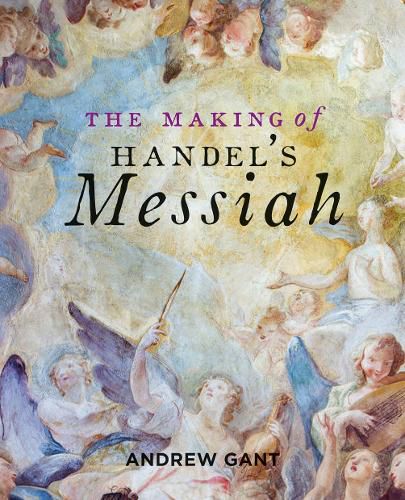Readings Newsletter
Become a Readings Member to make your shopping experience even easier.
Sign in or sign up for free!
You’re not far away from qualifying for FREE standard shipping within Australia
You’ve qualified for FREE standard shipping within Australia
The cart is loading…






The first performance of Handel’s Messiah in Dublin in 1742 is now legendary. Gentlemen were asked to leave their swords at home and ladies to come without hoops in their skirts in order to fit more people into the audience. Why then, did this now famous and much-loved oratorio receive a somewhat cool reception in London less than a year later?
Placing Handel’s best-known work in the context of its times, this vivid account charts the composer’s working relationship with his librettist, the gifted but demanding Charles Jennens, and looks at Handel’s varied and evolving company of singers together with his royal patronage. Through examination of the composition manuscript and Handel’s own conducting score, held in the Bodleian, it explores the complex issues around the performance of sacred texts in a non-sacred context, particularly Handel’s collaboration with the men and boys of the Chapel Royal. The later reception and performance history of what is one of the most successful pieces of choral music of all time is also reviewed, including the festival performance attended by Haydn, the massed-choir tradition of the Victorian period and today’s ‘come-and-sing’ events.
$9.00 standard shipping within Australia
FREE standard shipping within Australia for orders over $100.00
Express & International shipping calculated at checkout
The first performance of Handel’s Messiah in Dublin in 1742 is now legendary. Gentlemen were asked to leave their swords at home and ladies to come without hoops in their skirts in order to fit more people into the audience. Why then, did this now famous and much-loved oratorio receive a somewhat cool reception in London less than a year later?
Placing Handel’s best-known work in the context of its times, this vivid account charts the composer’s working relationship with his librettist, the gifted but demanding Charles Jennens, and looks at Handel’s varied and evolving company of singers together with his royal patronage. Through examination of the composition manuscript and Handel’s own conducting score, held in the Bodleian, it explores the complex issues around the performance of sacred texts in a non-sacred context, particularly Handel’s collaboration with the men and boys of the Chapel Royal. The later reception and performance history of what is one of the most successful pieces of choral music of all time is also reviewed, including the festival performance attended by Haydn, the massed-choir tradition of the Victorian period and today’s ‘come-and-sing’ events.